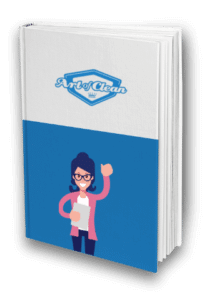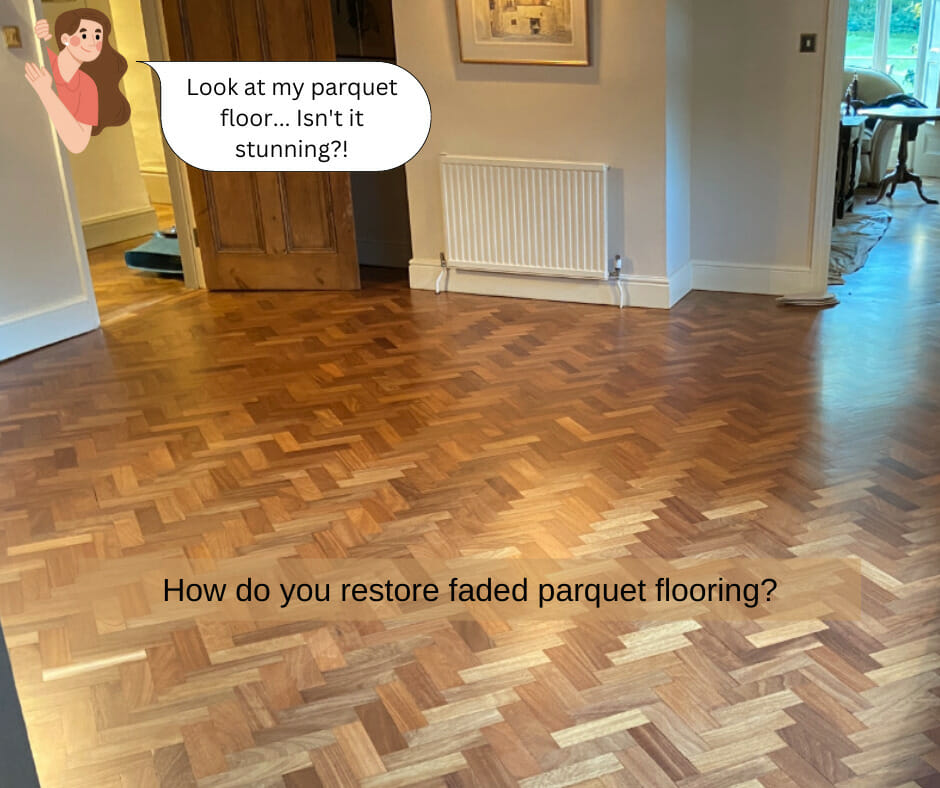If you have landed here on my page, you likely have tired and faded parquet flooring, and you want to know how you restore it. Well, you’re in luck… my job is to help you, and that’s what I will do! With the rising cost of living, I have made it my mission to share with you as much as possible to save you as much as possible… And working for Art of Clean means I’ve picked up a few tips and tricks along the way.
Art of Clean is a premium wood floor restoration company in the East Anglia area. We specialise in lovingly restoring wood floors back to life, and we’re here to help you bring back the radiance of your faded parquet floors. In this blog, we will guide you through the process of restoring your wood flooring, providing you with solutions and tips to do it yourself if you wish.
So, let’s begin…
Understanding Parquet Flooring:
Parquet floors are a beautiful and characterful type of flooring that has seen a surge in popularity. They make this type of flooring with solid wood blocks or tiles laid in geometric patterns such as herringbone and chevron. Done right, parquet flooring can add elegance and sophistication to any home. If you are lucky enough to have an original parquet floor, restoring it to its former glory is worth the time and effort.
Common Issues with Faded Parquet Floors:
Before we delve into the restoration process, let’s discuss some common issues owners of faded parquet floors face. Issues may include missing blocks, unstable or loose blocks, gaps between pieces, an uneven surface, or damage such as scratches and stains. Identifying these issues is crucial for planning and executing an effective restoration strategy.
Restoration Techniques for Faded Parquet Floors:
Replacing Missing Blocks:
If you find missing blocks on your parquet floor, it is best to find reclaimed blocks that match the originals in size and thickness.
Try sanding a small area can help establish the wood type, and then you can search for replacement blocks in places like reclamation yards or online platforms.
They recommend you seek professional assistance when removing concrete patches or for complex restoration tasks.
Sanding and Refinishing:
Sanding is a crucial step in the restoration process, as it helps remove the old finish, scratches, and stains from the surface of the wood.
Start by cleaning the floor thoroughly and ensuring it is free of dirt and dust. Then, using an appropriate sanding grinder, carefully sand the surface of the parquet blocks.
After sanding, apply a finish to protect and enhance the beauty of the wood. This process can be time-consuming, and it requires attention to detail to achieve the results you are looking for.
Recoating:
Recoating is an excellent option if sanding is unnecessary or prefer a less invasive approach. It involves adding a new topcoat of finish to the existing wood floor finish.
Mechanical adhesion and chemical adhesion are two common methods for recoating.
- Mechanical adhesion:
It involves lightly abrading the surface finish… allowing the new coat of finish to bond to the old coat.
- Chemical adhesion:
This procedure is what they do using an adhesion promoter or bonding agent to stick the new topcoat to the existing finish.
Procedures like this are quite technical, and you must know how to do it properly. Reading up and watching some YouTube videos is a good way to go with this! However, if you prefer to leave this task to professionals, they are always ready to help.
Maintenance Tips for Preserving Restored Parquet Floors:
Once you have successfully restored your parquet floors, it’s important to maintain them properly to ensure their longevity and beauty. Here are some maintenance tips to help you preserve your restored parquet floors:
Regular Cleaning:
Vacuum/sweep the floor regularly to remove dirt, dust, and debris. No using abrasive cleaners or harsh chemicals that can damage the finish.
Avoid Water Damage:
Clean up spills promptly to prevent water damage. Parquet floors are susceptible to warping and swelling when exposed to excessive moisture.
Use Protective Pads:
The place felt or rubber pads under furniture legs to prevent scratches and indentations when moving or rearranging furniture.
Don’t Use High Heels:
Discourage walking on your parquet floors with high heels or shoes with sharp heels, as they can cause scratches and dents.
Control Humidity Levels:
Maintaining a stable indoor humidity prevents the wood from expanding or contracting excessively. Use a humidifier during dry seasons and a dehumidifier during humid seasons to keep the humidity within the recommended range.
So, to summarise what we have learnt:
Restoring faded parquet floors requires time, effort, and attention to detail, but the results are well worth it. Whether you embark on the restoration journey yourself or seek professional assistance, your parquet floors will regain their beauty and become a stunning feature of your home. Remember to follow the maintenance tips provided to preserve the beauty and life of your restored parquet floors.
If you are looking for a Floor sanding company near you, check out this blog:
Check out this blog to see our reviews all in one place:
Download our eBook…
To learn more about caring for your wood floor!

Your Wood Floor

Written by Tracey Gilbey, Marketing
For further advice or information on our Carpet and Soft Furnishing care, please don’t hesitate to contact the Art of Clean team on 01223 901549 in Cambridge. Our services include Carpet Cleaning, Upholstery Cleaning, oriental and area Rug Cleaning, Curtain Cleaning, Patio and Driveway Pressure washing, Leather Cleaning, Stone and Tile Floor Cleaning and Wood Floor Sanding and Restoration. We also supply new flooring and carpets through our sister company Art of Flooring. Farthings Cambridge provides our Dry Cleaning service.

